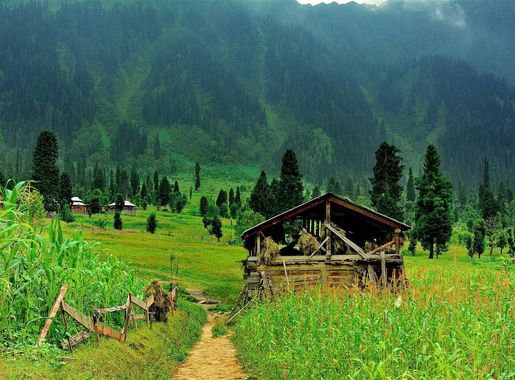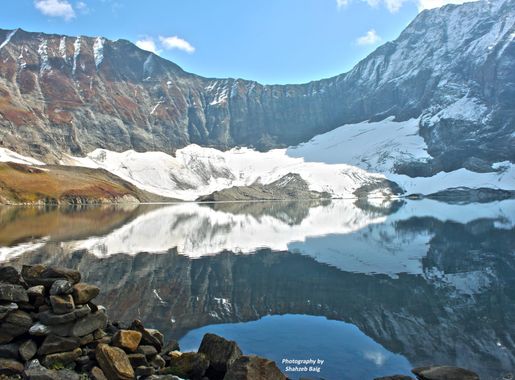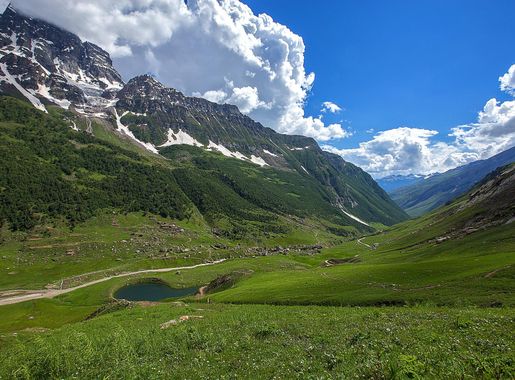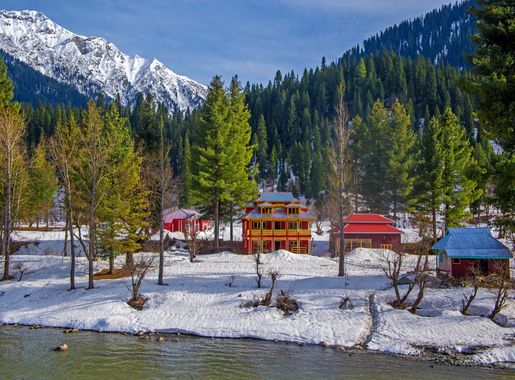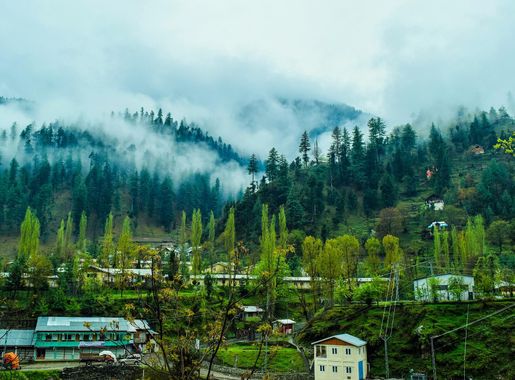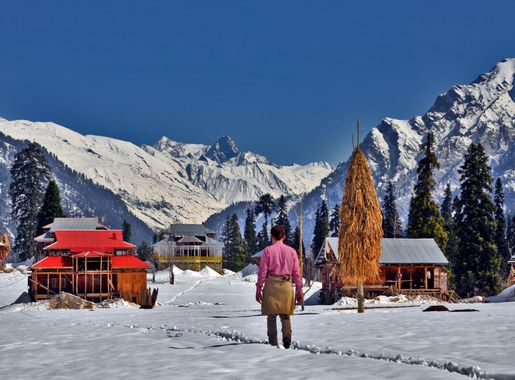
Enchanting Neelum Valley: The Jewel of Pakistan
Explore Neelum Valley, a pristine paradise in Azad Kashmir, Pakistan, known for its lush landscapes, ancient ruins, and vibrant local culture.
Neelum Valley, often referred to as the 'Blue Gem' of Pakistan, is a breathtaking paradise nestled in the Azad Kashmir region. The valley stretches over 240 kilometers, offering an impressive array of lush green forests, snow-capped mountains, and crystal-clear rivers. The Neelum River, which meanders through the valley, adds to the serene beauty of the landscape, making it an ideal spot for nature lovers and adventure seekers alike. The valley is home to several picturesque towns and villages, each with its own unique charm. Athmuqam, the main town of Neelum Valley, serves as a gateway for tourists and provides essential amenities. Sharda, another popular spot, is known for its ancient ruins and historic Sharda University. The scenic beauty of Kel, located at an altitude of 6,879 feet, offers stunning views and is a base for trekking to the awe-inspiring Arang Kel. Visitors can indulge in a plethora of activities such as hiking, fishing, and camping. The valley is also famous for its vibrant local culture and warm hospitality. Local handicrafts, traditional Kashmiri cuisine, and the annual festivals provide a rich cultural experience. Whether you are seeking tranquility or adventure, Neelum Valley promises an unforgettable journey through nature's splendor.
Local tips in Neelum Valley
- Best time to visit is from April to October when the weather is pleasant and the roads are accessible.
- Carry warm clothing even in summer, as temperatures can drop significantly in the evenings.
- Respect local customs and traditions; always ask for permission before taking photos of locals.
- Try local delicacies like Rogan Josh and seek out traditional Kashmiri tea, known as Kahwa.
- Ensure you have a good quality camera to capture the stunning landscapes and picturesque views.
Enchanting Neelum Valley: The Jewel of Pakistan
Neelum Valley, often referred to as the 'Blue Gem' of Pakistan, is a breathtaking paradise nestled in the Azad Kashmir region. The valley stretches over 240 kilometers, offering an impressive array of lush green forests, snow-capped mountains, and crystal-clear rivers. The Neelum River, which meanders through the valley, adds to the serene beauty of the landscape, making it an ideal spot for nature lovers and adventure seekers alike. The valley is home to several picturesque towns and villages, each with its own unique charm. Athmuqam, the main town of Neelum Valley, serves as a gateway for tourists and provides essential amenities. Sharda, another popular spot, is known for its ancient ruins and historic Sharda University. The scenic beauty of Kel, located at an altitude of 6,879 feet, offers stunning views and is a base for trekking to the awe-inspiring Arang Kel. Visitors can indulge in a plethora of activities such as hiking, fishing, and camping. The valley is also famous for its vibrant local culture and warm hospitality. Local handicrafts, traditional Kashmiri cuisine, and the annual festivals provide a rich cultural experience. Whether you are seeking tranquility or adventure, Neelum Valley promises an unforgettable journey through nature's splendor.
When is the best time to go to Neelum Valley?
Iconic landmarks you can’t miss
Neelam Valley
Explore the enchanting landscapes and rich culture of Neelam Valley, a hidden gem in Azad Kashmir, perfect for nature and adventure lovers.

Red Fort Muzaffarabad
Discover the Red Fort of Muzaffarabad, a historical gem showcasing Mughal architecture and stunning landscapes in Azad Jammu and Kashmir.

Arang Kel
Experience the breathtaking landscapes and rich culture of Arang Kel, the hidden jewel of Neelum Valley, Jammu & Kashmir.
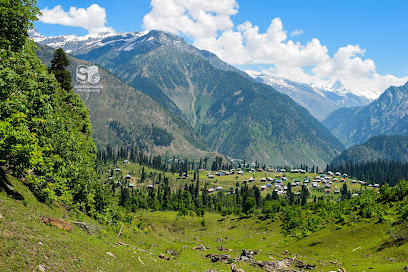
Sharda Camping Site
Experience the serene beauty of Sharda Camping Site in Neelum Valley, a perfect retreat for nature lovers and adventure seekers.
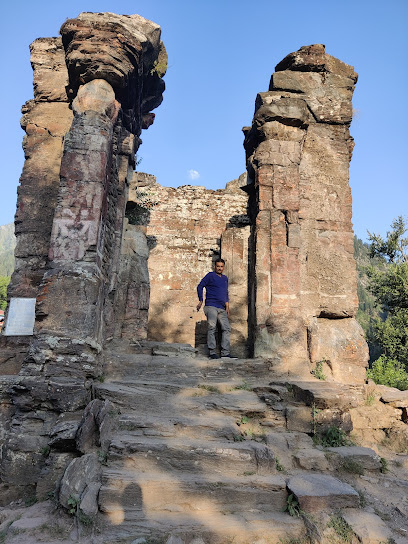
Ratti Gali Lake
Discover the breathtaking beauty of Ratti Gali Lake, an alpine gem in Neelum Valley, perfect for nature lovers and adventure seekers alike.
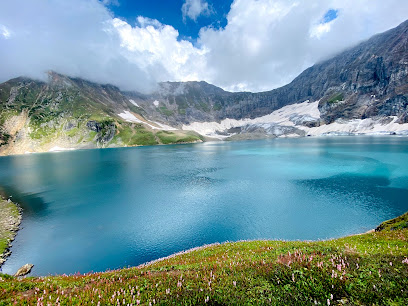
Neelam Point lovers, Pakistan
Discover Neelam Point in Abbottabad, a breathtaking tourist attraction offering stunning views and a perfect escape into nature's embrace.

Neelum Valley Tours by iMusafir.pk
Immerse yourself in the breathtaking landscapes and rich culture of Neelum Valley with guided tours by iMusafir.pk.
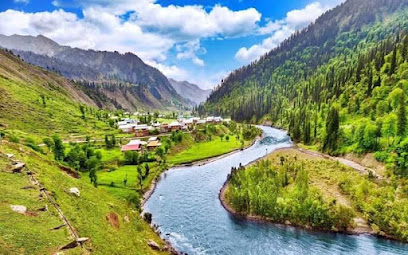
Neelum Valley Kashmir
Explore the breathtaking beauty and rich culture of Neelum Valley, Kashmir's hidden gem, perfect for nature lovers and adventure seekers.
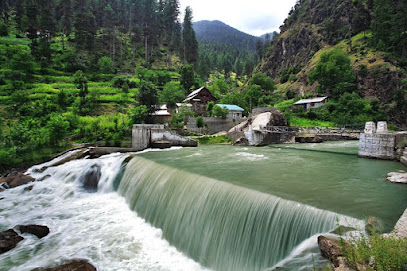
Neelum River
Discover the breathtaking beauty of Neelum River, a serene escape in Neelum Valley, perfect for nature lovers and adventure seekers alike.
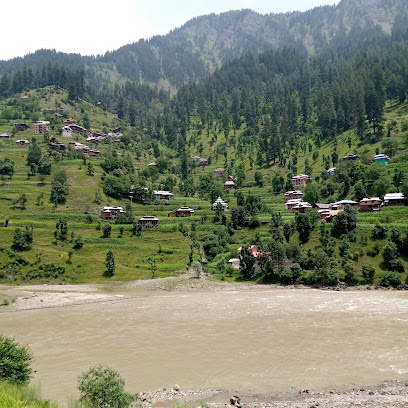
Tour Packages Neelum Valley
Discover the breathtaking beauty and rich culture of Neelum Valley, a must-visit paradise in Azad Jammu and Kashmir for every traveler.
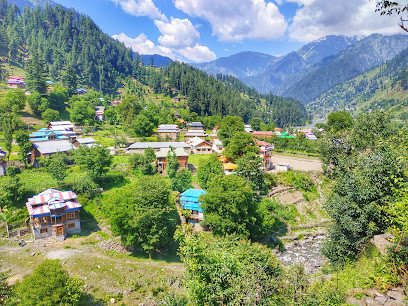
Neelum
Discover the breathtaking beauty of Neelum Valley, where lush landscapes and serene rivers create the ultimate escape in Muzaffarabad, Pakistan.
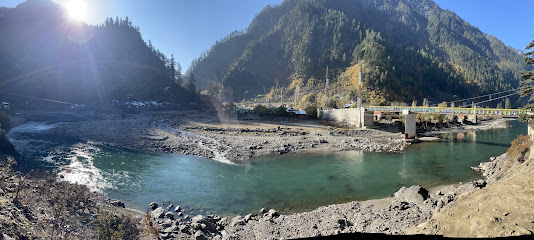
Kel Waterfall
Experience the breathtaking beauty of Kel Waterfall in Azad Jammu and Kashmir, where nature meets serenity in an unforgettable escape.
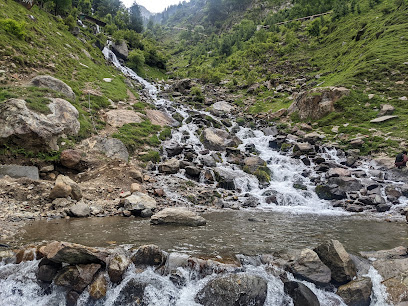
Leepa Valley View
Experience the serene beauty of Leepa Valley View, a stunning tourist attraction in Pakistan offering breathtaking landscapes and rich cultural heritage.
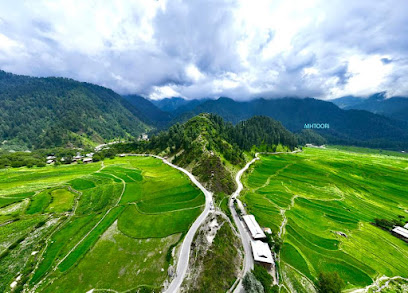
Neelum-Jhelum Hydropower Project Nausari
Explore the Neelum-Jhelum Hydropower Project: Where Cutting-Edge Engineering Meets the Stunning Beauty of Neelum Valley.
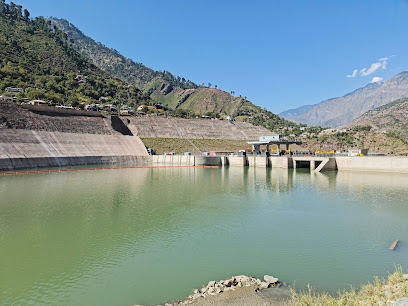
Wadi Neelum
Discover the enchanting beauty of Wadi Neelum, a Himalayan paradise with lush landscapes, rich culture, and unforgettable experiences.

Unmissable attractions to see
Toli Peer
Discover the serene beauty of Toli Peer, a breathtaking tourist attraction in Pakistan, perfect for hiking and immersing in nature's tranquility.

Valley trackers Hotel
Experience the natural beauty and warm hospitality of Valley Trackers Hotel, a perfect retreat in Neelum Valley for adventurous tourists.
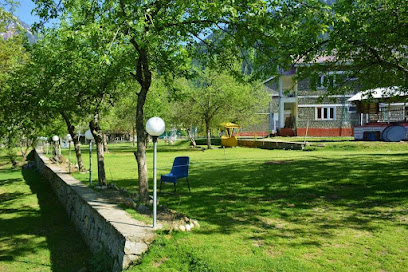
Neelam Valley
Experience the enchanting landscapes, lush greenery, and serene rivers of Neelam Valley, a natural paradise in Pakistan for nature lovers and adventure seekers.
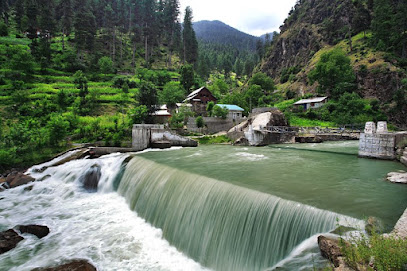
Pir Chinasi
Discover the breathtaking beauty of Pir Chinasi, a serene haven in Azad Jammu and Kashmir, offering stunning views and rich cultural experiences.
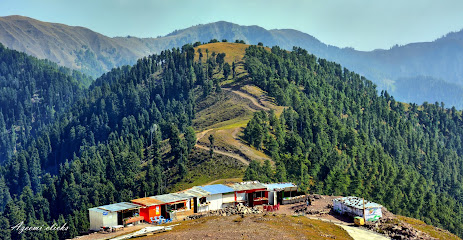
Red Fort Muzaffarabad
Experience the rich history and stunning architecture of the Red Fort Muzaffarabad, a captivating fortress in the heart of Azad Jammu and Kashmir.
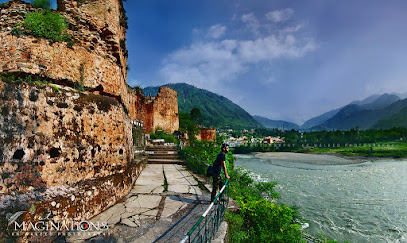
Dhanni Waterfall
Experience the breathtaking beauty of Dhanni Waterfall, a hidden gem in Azad Jammu and Kashmir perfect for nature lovers and adventure seekers.
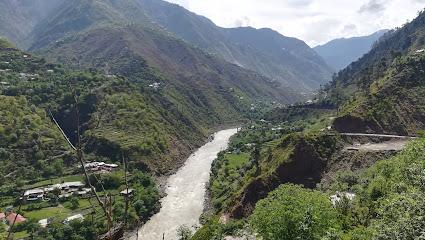
Neelam Point lovers, Pakistan
Discover the breathtaking views and tranquility of Neelam Point in Abbottabad, Khyber Pakhtunkhwa, a perfect escape into nature's embrace.
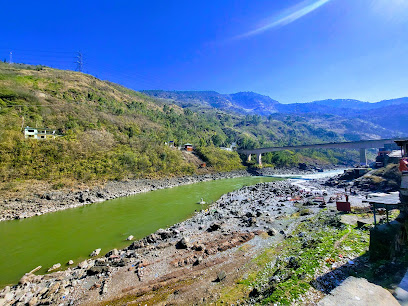
Ratti Gali Lake
Explore the breathtaking beauty of Ratti Gali Lake, an alpine paradise nestled in the Neelum Valley of Jammu and Kashmir, perfect for nature lovers and adventurers.
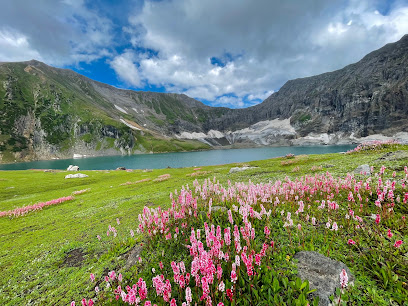
Kohala Picnic Point, Pakistan
Explore the serene beauty of Kohala Picnic Point in Abbottabad, Pakistan, where nature meets tranquility along the banks of the Neelam River.
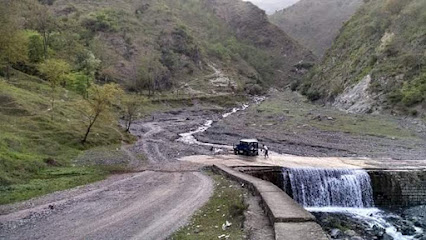
Keran valley
Experience the tranquil beauty of Keran Valley, a hidden gem in India, where lush landscapes and serene rivers await your exploration.
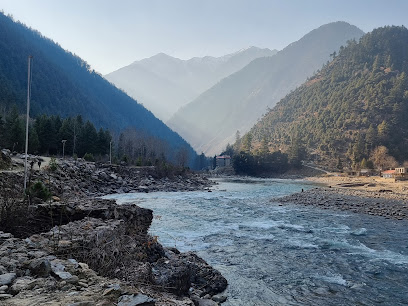
Chamb Waterfall ,چھمب آبشار
Explore the breathtaking beauty of Chamb Waterfall in Azad Jammu and Kashmir, a serene escape into nature's splendor.
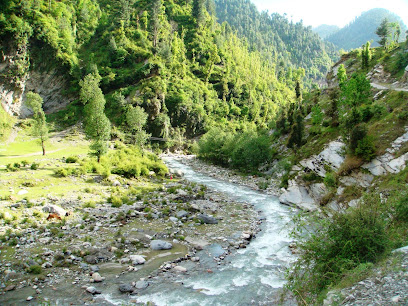
Kashmir Waterfall Picnic point Dullai
Discover the enchanting beauty of Kashmir Waterfall Picnic Point, a serene escape in Village Dullai, perfect for nature lovers and picnicking enthusiasts.

Outdoor Adventures Camp Ratti Gali
Experience the natural beauty and adventure at Camp Ratti Gali, your perfect outdoor escape in Neelum Valley, Pakistan.
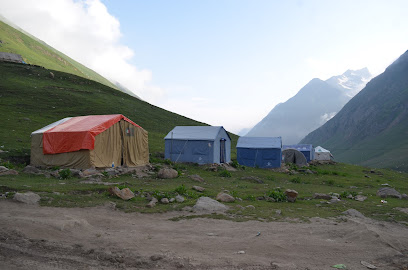
Jaskool Waterfall Chanari AJK, Pakistan
Explore Jaskool Waterfall in Chanari, AJK – a hidden gem of natural beauty and tranquility amidst the stunning landscapes of Azad Jammu and Kashmir.
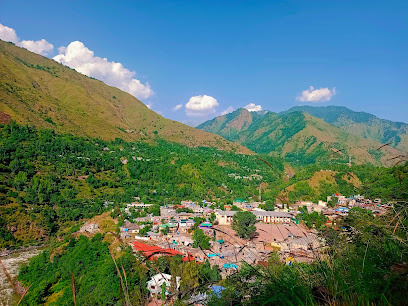
Leepa Valley View
Discover the stunning beauty of Leepa Valley View, where lush green valleys meet majestic mountains in Pakistan's serene landscapes.
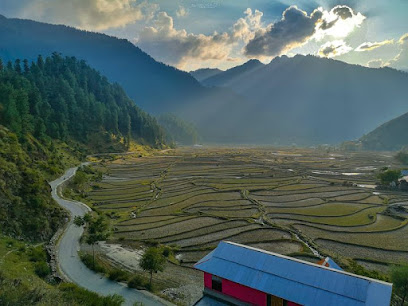
Essential places to dine
Neelum View Hotel,نیلم ویو ہوٹل مظفرآباد
Experience unmatched hospitality at Neelum View Hotel with breathtaking views in Muzaffarabad's stunning landscapes.
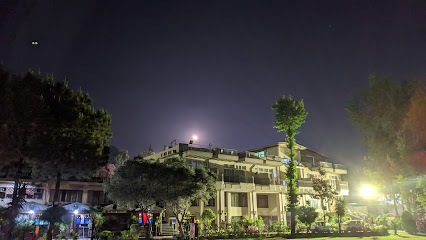
Sangam Hotel Muzaffarabad
Discover breathtaking views and delicious cuisine at Sangam Hotel Muzaffarabad, your perfect retreat in nature's embrace.
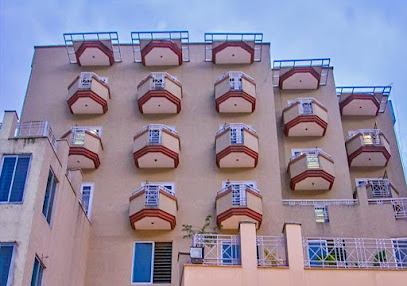
Grandeur Hotel Muzaffarabad
Discover unparalleled comfort and exquisite dining at Grandeur Hotel Muzaffarabad in the heart of Azad Jammu and Kashmir.

Mohammad Usman Chappal Kabab & Qeema House
Experience authentic Pakistani flavors at Mohammad Usman Chappal Kabab & Qeema House—where every bite tells a story.
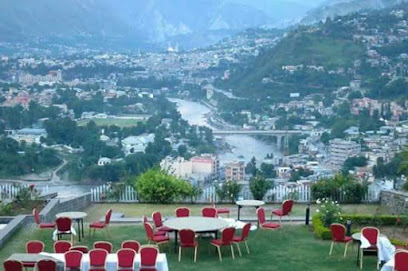
Kashmir Sharda View Guest House
Discover unparalleled beauty and comfort at Kashmir Sharda View Guest House in Neelum Valley, where nature meets serenity.
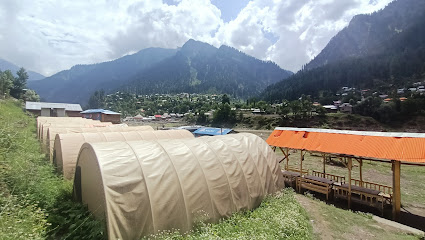
Neelum Star River Guest House
Discover peace and comfort at Neelum Star River Guest House in scenic Neelum Valley – where stunning views meet authentic local cuisine.
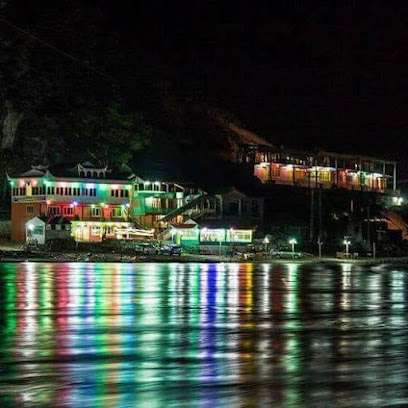
Valley Restaurant
Experience the vibrant flavors of local cuisine at Valley Restaurant in New Mirpur City - A must-visit culinary hotspot for every traveler.
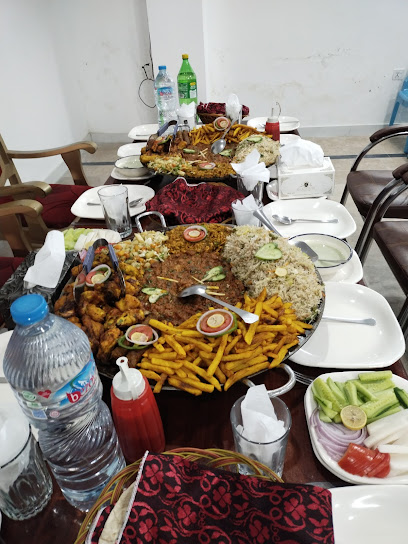
Hotel Neelum River View and Guest House
Discover breathtaking views and authentic Kashmiri cuisine at Hotel Neelum River View & Guest House in scenic Azad Jammu & Kashmir.
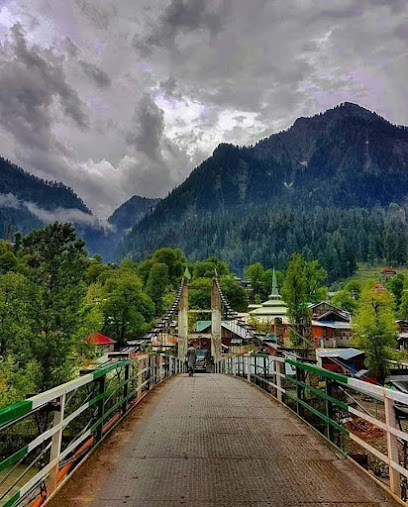
Kashmir Mount View Restaurant
Experience exquisite dining at Kashmir Mount View Restaurant amidst stunning mountain vistas and authentic Pakistani flavors.
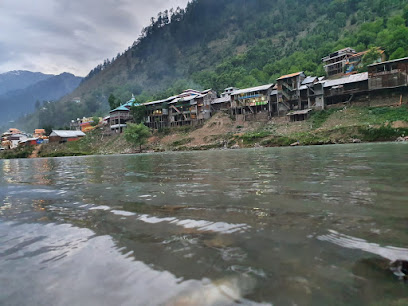
The Twin Hills Resort
Discover serenity at The Twin Hills Resort in Keran – where stunning river views meet luxurious comfort amidst nature's embrace.
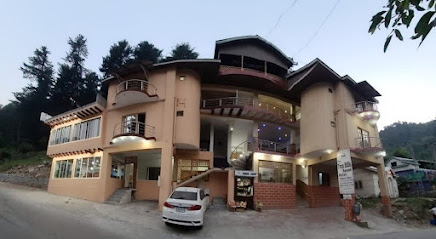
AL Nawaz Guest House, and restaurant
Experience comfort and culinary delights at AL Nawaz Guest House & Restaurant in Muzaffarabad—your gateway to stunning landscapes and authentic flavors.
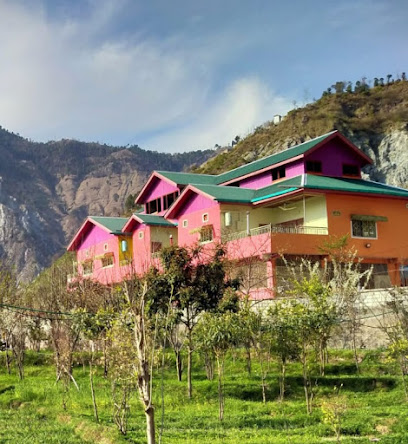
Taj Hills Resort AJK Pakistan
Discover tranquility at Taj Hills Resort in Neelum Valley - where luxury meets nature's beauty for an unforgettable getaway.
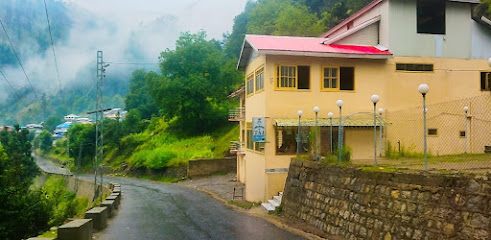
Green Residency Muzaffarabad
Experience unparalleled comfort and stunning views at Green Residency Muzaffarabad – your perfect escape in Azad Jammu and Kashmir.
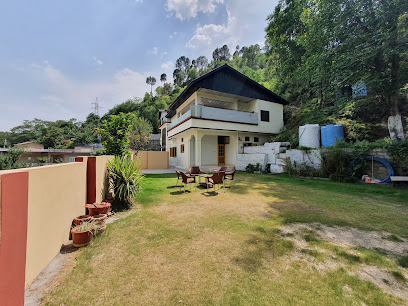
Neelum View Restaurant
Experience breathtaking views and exquisite flavors at Neelum View Restaurant – where every meal is paired with nature's beauty.
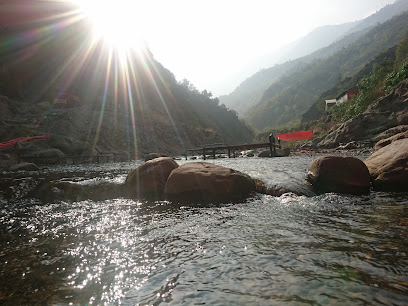
Broadway Restaurant
Experience the rich flavors of Pakistan at Broadway Restaurant in Muzaffarabad - where culinary delights meet breathtaking views.
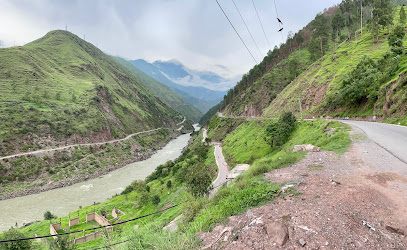
Markets, malls and hidden boutiques
Neelam Valley
Explore the enchanting Neelam Valley, where stunning landscapes, vibrant culture, and outdoor adventures await in the heart of nature.
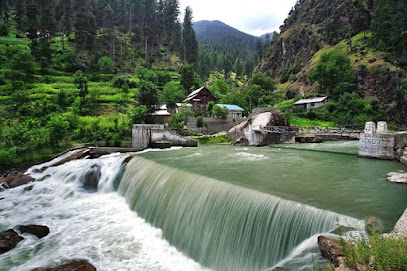
Kundal Shahi Waterfall
Experience the breathtaking beauty of Kundal Shahi Waterfall, a serene escape in Neelum Valley, where nature's wonders await.
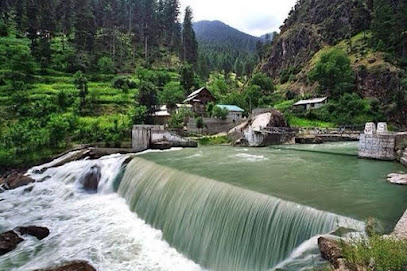
Rahat Bakers
Discover the delightful flavors of Rahat Bakers, Muzaffarabad's treasured bakery offering a tempting array of sweets and pastries.
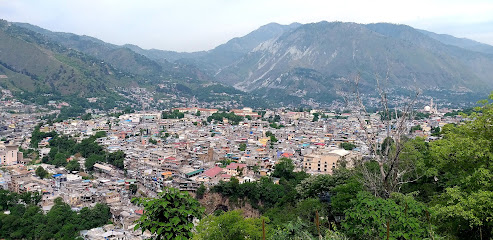
Jagran Resort kutton
Experience the serene beauty of Neelum Valley at Jagran Resort Kutton, your perfect mountain escape with stunning views and warm hospitality.
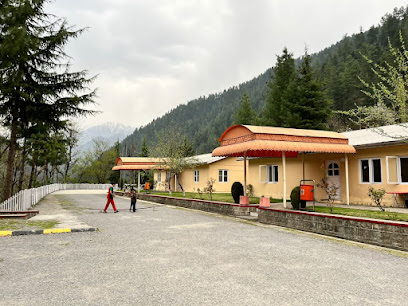
Dhanni Waterfall
Experience the breathtaking beauty of Dhanni Waterfall, a hidden gem in Azad Jammu and Kashmir that captivates with its serene environment and stunning landscapes.
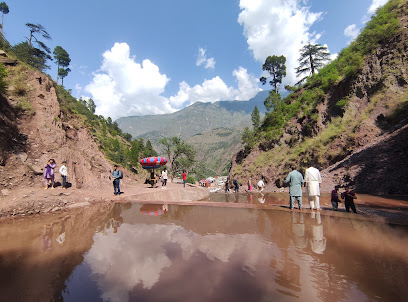
Neelum Good View, Neelumvalley, POK
Discover the beauty of Neelum Valley at Neelum Good View, a serene hotel retreat surrounded by nature's splendor.
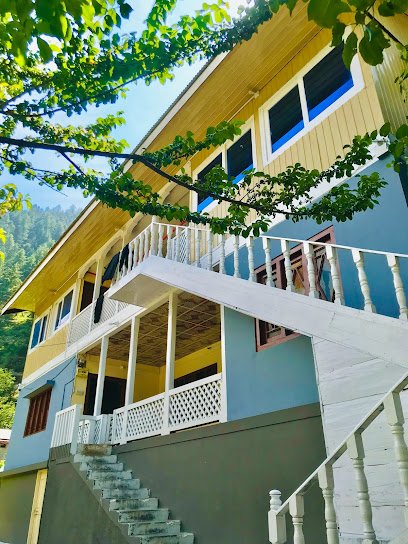
Neelam Point lovers, Pakistan
Discover the serene beauty of Neelam Point, a hidden gem in Abbottabad, Pakistan, perfect for nature lovers and adventure seekers alike.
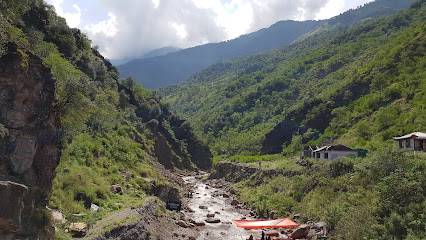
Arang Kel Cable Car
Discover the breathtaking views of Neelum Valley with a ride on the Arang Kel Cable Car, your gateway to adventure and natural beauty.
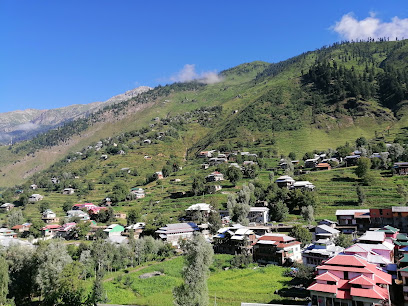
Shaky's Jatlan 01
Discover the vibrant flavors of fast food at Shaky's Jatlan, a must-visit culinary stop in the heart of Azad Jammu and Kashmir.
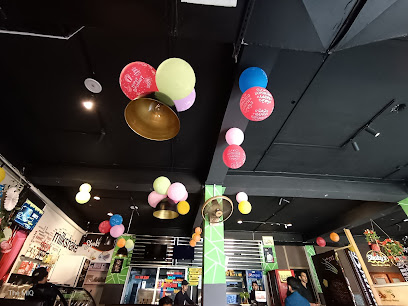
Neelum Valley Kashmir
Discover the breathtaking beauty of Neelum Valley, a natural paradise in Azad Jammu and Kashmir, where adventure and tranquility await.

Neelum Valley Tours by iMusafir.pk
Discover the enchanting Neelum Valley, a paradise of stunning landscapes and thrilling outdoor adventures in Azad Jammu and Kashmir.
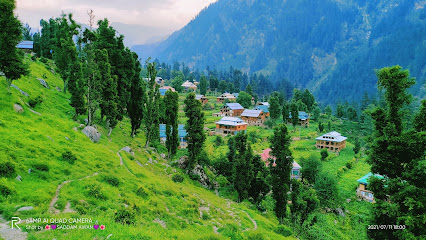
Ratti Gali Lake
Experience the breathtaking beauty of Ratti Gali Lake in Jammu and Kashmir, a stunning alpine glacial lake surrounded by majestic mountains.
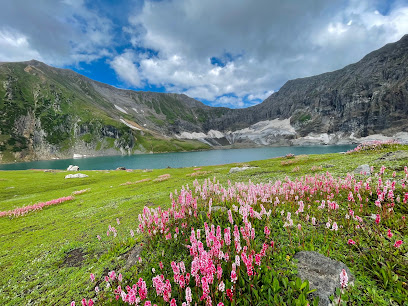
Mohammad Usman Chappal Kabab & Qeema House
Experience the rich culinary heritage of Azad Jammu and Kashmir at Mohammad Usman Chappal Kabab & Qeema House, home to exquisite chappal kebabs and delicious qeema.
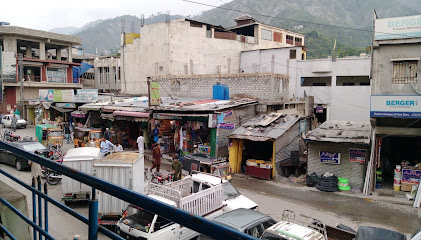
Keran valley
Explore the enchanting landscapes of Keran Valley, a breathtaking vista point in India offering nature's tranquility and adventure.

Neelum Star River Guest House
Discover the beauty of Neelum Valley at Neelum Star River Guest House, where comfort meets nature and delicious cuisine awaits.
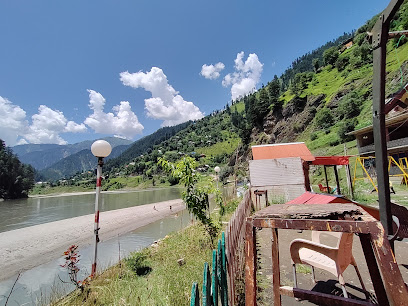
Essential bars & hidden hideouts
Neelum View Hotel,نیلم ویو ہوٹل مظفرآباد
Discover the charm of Neelum View Hotel in Muzaffarabad, offering stunning views, exquisite dining, and versatile event spaces in the heart of Azad Jammu and Kashmir.
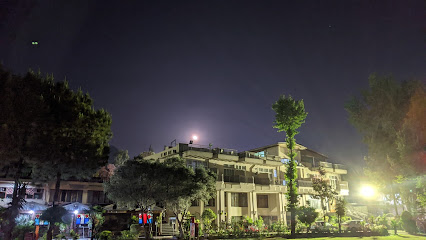
Mohammad Usman Chappal Kabab & Qeema House
Discover the vibrant flavors of Muzaffarabad at Mohammad Usman Chappal Kabab & Qeema House, where authentic Pakistani cuisine awaits you.
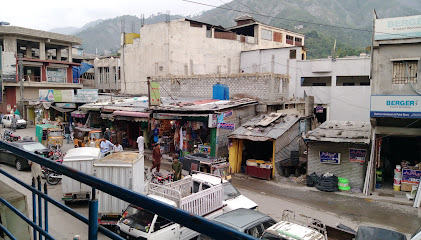
Kashmir Sharda View Guest House
Experience the breathtaking beauty of Neelum Valley at Kashmir Sharda View Guest House, where comfort meets nature's splendor.
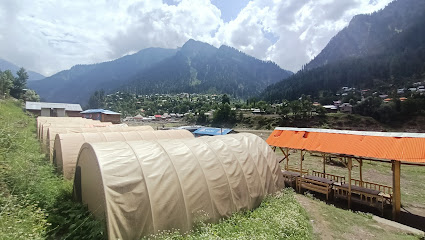
Neelum Star River Guest House
Experience the tranquility of Neelum Star River Guest House, an idyllic retreat along the banks of the Neelum River in picturesque Sharda.
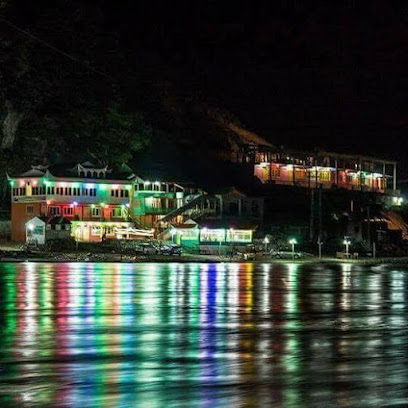
The Café Muzaffarabad
Discover the delightful flavors and inviting ambiance of Café Muzaffarabad, a local gem for coffee lovers and food enthusiasts.
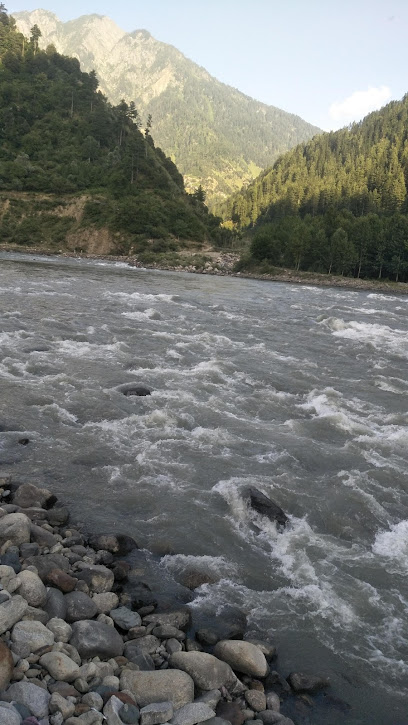
Hotel Neelum River View and Guest House
Experience unparalleled comfort and stunning views at Hotel Neelum River View and Guest House in the heart of Azad Jammu and Kashmir.
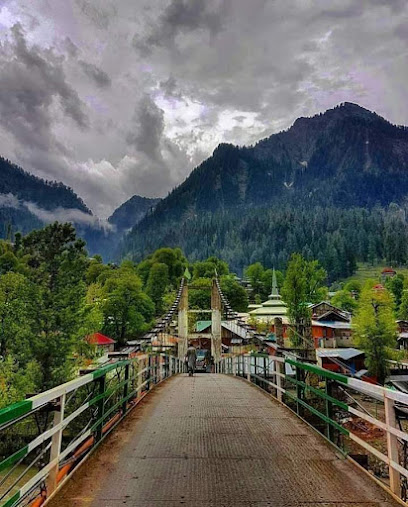
The Twin Hills Resort
Discover unparalleled luxury and breathtaking views at The Twin Hills Resort in Neelum Valley, where nature meets comfort for an unforgettable getaway.
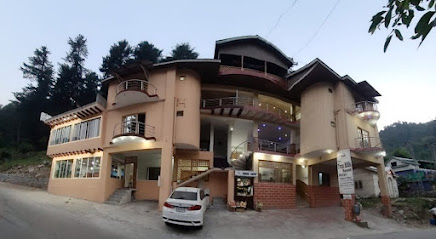
AL Nawaz Guest House, and restaurant
Discover the perfect blend of comfort and local cuisine at AL Nawaz Guest House and Restaurant in the heart of Muzaffarabad.
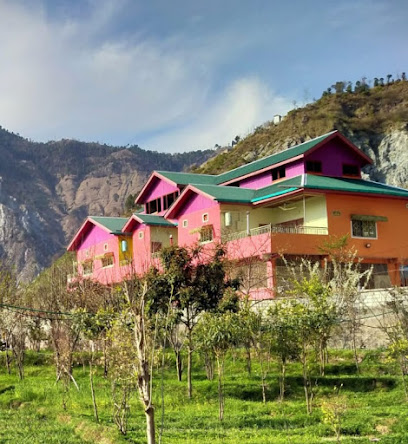
Taj Hills Resort AJK Pakistan
Experience the tranquility of Taj Hills Resort in Neelum Valley, where stunning views and luxurious comfort meet the serenity of nature.
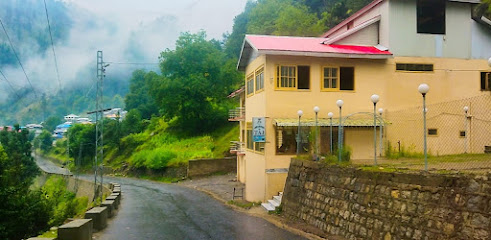
Neelum View Restaurant
Experience breathtaking views and authentic Pakistani cuisine at Neelum View Restaurant in Abbottabad.
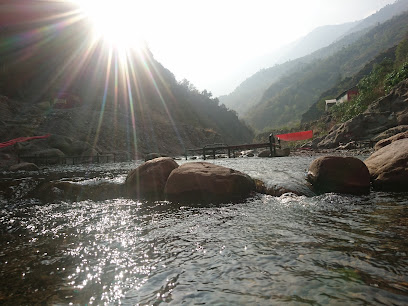
Broadway Restaurant
Discover the taste of authentic Pakistani cuisine at Broadway Restaurant in Muzaffarabad, a top dining destination for travelers.
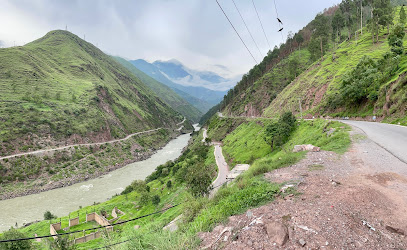
IBEX COTTAGE
Discover the serene beauty of Neelum Valley at IBEX COTTAGE, a charming restaurant and hotel offering delicious cuisine and breathtaking views.
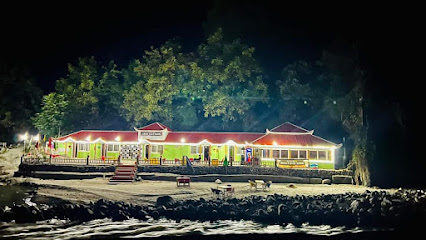
Pine Park Lodges AJK Pakistan
Experience the beauty of Neelum Valley at Pine Park Lodges, where nature and comfort come together for an unforgettable escape.
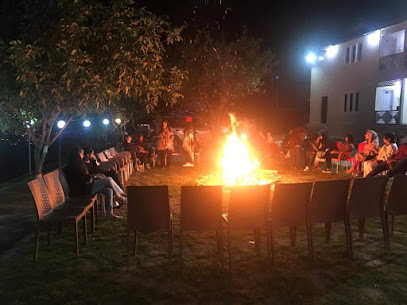
First Cup Of Tea
Experience the authentic taste of Neelum Valley at First Cup Of Tea, where every sip and bite encapsulates the region's vibrant culinary culture.
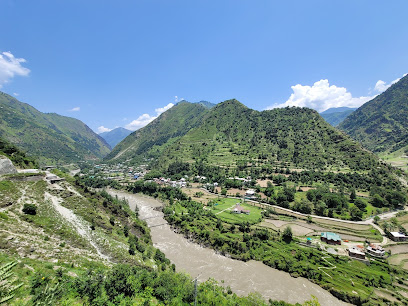
Neelum point
Experience the best chicken dishes at Neelum Point, nestled near Kohala Bridge in Abbottabad, Khyber Pakhtunkhwa's breathtaking landscapes.
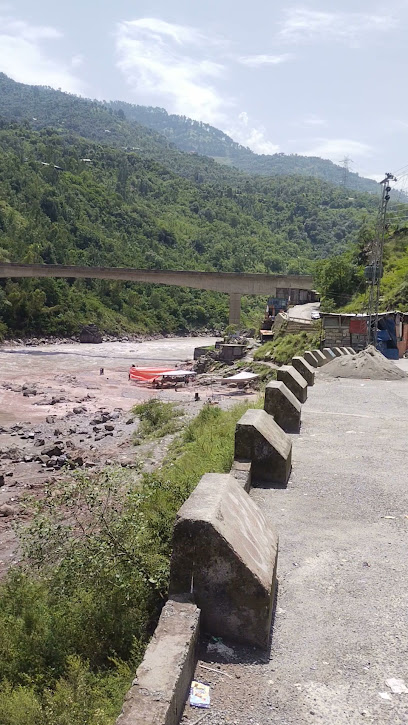
Local Phrases about Neelum Valley
-
- Helloآداب
[aadab] - Goodbyeخدا حافظ
[khuda hafiz] - Yesہاں
[haan] - Noنہیں
[nahi] - Please/You're welcomeبراہ کرم
[barah e karam] - Thank youشکریہ
[shukriya] - Excuse me/Sorryمعاف کیجیے
[maaf kijiye] - How are you?آپ کیسے ہیں؟
[aap kaise hain?] - Fine. And you?ٹھیک ہوں، آپ سنا؟
[theek hoon, aap suna?] - Do you speak English?کیا آپ انگریزی بولتے ہیں؟
[kya aap angrezi bolte hain?] - I don't understandمجھے سمجھ نہیں آیا
[mujhe samajh nahi aya]
- Helloآداب
-
- I'd like to see the menu, pleaseبراہ کرم مینو دیکھنا چاہتا ہوں
[barah e karam menu dekhna chahta hoon] - I don't eat meatمیں گوشت نہیں کھاتا
[mein gosht nahi khaata] - Cheers!خوش رہئیں!
[khush rahiye] - I would like to pay, pleaseبراہ کرم ادائیگی کرنا چاہتا ہوں
[barah e karam adaigi karna chahta hoon]
- I'd like to see the menu, pleaseبراہ کرم مینو دیکھنا چاہتا ہوں
-
- Help!مدد!
[madad!] - Go away!چلے جائیں!
[chale jaiye!] - Call the Police!پولیس کو بلائیں!
[police ko bulaiye!] - Call a doctor!ڈاکٹر کو بلائیں!
[doctor ko bulaiye!] - I'm lostمیں گم ہو گیا ہوں
[mein gum ho gaya hoon] - I'm illمیں بیمار ہوں
[mein beemar hoon]
- Help!مدد!
-
- I'd like to buy...مجھے خریدنا ہے...
[mujhe khareedna hai...] - I'm just lookingمیں صرف دیکھ رہا ہوں
[mein sirf dekh raha hoon] - How much is it?یہ کتنا ہے؟
[yeh kitna hai?] - That's too expensiveیہ بہت مہنگا ہے
[yeh bohat mehnga hai] - Can you lower the price?کیا آپ قیمت کم کرسکتے ہیں؟
[kya aap qeemat kam kar sakte hain?]
- I'd like to buy...مجھے خریدنا ہے...
-
- What time is it?وقت کیا ہوا ہے؟
[waqt kya hua hai?] - It's one o'clockایک بجے ہیں
[aik baje hain] - Half past (10)دس بجے کا آدھا
[das baje ka aadha] - Morningصبح
[subah] - Afternoonدوپہر
[dopehar] - Eveningشام
[shaam] - Yesterdayگزشتہ کل
[guzishta kal] - Todayآج
[aaj] - Tomorrowکل
[kal] - 1ایک
[aik] - 2دو
[do] - 3تین
[teen] - 4چار
[chaar] - 5پانچ
[paanch] - 6چھہ
[chhe] - 7سات
[saat] - 8آٹھ
[aath] - 9نو
[no] - 10دس
[das]
- What time is it?وقت کیا ہوا ہے؟
-
- Where's a/the...?...کہاں ہے؟
[...kahan hai?] - What's the address?پتہ کیا ہے؟
[pata kya hai?] - Can you show me (on the map)?کیا آپ مجھے دکھا سکتے ہیں (نقشہ پر)؟
[kya aap mujhe dikhha sakte hain (naqsha par)?] - When's the next (bus)?اگلی (بس) کب ہے؟
[agli (bus) kab hai?] - A ticket (to ....)ایک ٹکٹ (کے لئے ....)
[aik ticket (ke liye ....)]
- Where's a/the...?...کہاں ہے؟
History of Neelum Valley
-
Neelum Valley, nestled in the northern regions of Pakistan, has roots deep in antiquity. Archaeological findings indicate that the valley was inhabited by various ancient civilizations. Artifacts and inscriptions suggest the presence of early human settlements dating back thousands of years, indicating that the valley was a cradle of early human civilization.
-
During the medieval period, Neelum Valley was a crucial segment of the Silk Route, serving as a conduit for trade between Central Asia and the Indian Subcontinent. The valley saw the movement of traders, explorers, and invaders, making it a melting pot of cultures and traditions. The remnants of ancient caravanserais and forts stand testament to its historical significance during this era.
-
The Mughal Empire, known for its grandeur and architectural marvels, left an indelible mark on Neelum Valley. The Mughals, enchanted by the valley’s natural beauty, often used it as a summer retreat. Mughal-era gardens, forts, and mosques, though in ruins, still narrate tales of the past. The intricate Mughal architectural styles can be observed in the remnants scattered throughout the valley.
-
The British colonial period brought significant administrative changes to Neelum Valley. The British, recognizing the strategic importance of the region, established various administrative posts and developed infrastructure. The remnants of colonial-era buildings and road networks are still visible, depicting the blend of local and British architectural styles.
-
The partition of British India in 1947 had a profound impact on Neelum Valley. The valley, like many other regions, experienced the turbulence of mass migrations and border disputes. The Line of Control (LoC) between Pakistan and India runs through the valley, significantly affecting the lives and culture of its inhabitants. Despite the challenges, the valley has preserved its unique cultural heritage.
-
In recent decades, Neelum Valley has emerged as a prominent tourist destination in Pakistan. The valley's pristine natural beauty, combined with its rich cultural and historical heritage, attracts thousands of visitors annually. Efforts are being made to preserve its historical sites and promote sustainable tourism, ensuring that the valley’s history and culture are celebrated and preserved for future generations.
Neelum Valley Essentials
-
Neelum Valley is located in the northern region of Azad Jammu and Kashmir, Pakistan. The nearest major city is Muzaffarabad, which is approximately 90 kilometers away. To get there, you can fly into Islamabad International Airport and then take a road trip to Muzaffarabad. From Muzaffarabad, you can hire a private car or take a local bus to reach Neelum Valley. The journey by road offers stunning views but can take up to 4-6 hours depending on road conditions and traffic.
-
Within Neelum Valley, transportation options include local buses, jeeps, and private cars. Due to the rugged terrain, it is advisable to hire a 4x4 vehicle for a more comfortable and safe journey, especially if you plan to visit remote areas. Local jeeps are a popular choice for tourists and are available for hire in major towns such as Sharda and Kel. Walking and trekking are also common ways to explore the valley's scenic beauty.
-
The official currency in Pakistan is the Pakistani Rupee (PKR). While some hotels and larger establishments may accept credit cards, it is advisable to carry cash, especially when traveling to more remote areas of Neelum Valley. ATMs are available in Muzaffarabad and major towns within the valley, but it is wise to withdraw sufficient cash beforehand to ensure you have enough funds for your entire trip.
-
Neelum Valley is generally a safe destination for tourists, but it is advisable to take standard precautions. Avoid traveling alone at night and stay aware of your surroundings. Petty theft can occur, so keep your belongings secure. Some areas near the Line of Control (LoC) with India can be sensitive, so always check the latest travel advisories and avoid restricted zones. Interactions with locals are usually friendly, but it is best to be respectful of cultural norms.
-
In case of emergency, dial 15 for police assistance and 1122 for medical emergencies. The main hospital in Muzaffarabad can handle serious medical issues, while smaller clinics are available in towns like Sharda and Kel for minor health concerns. It is recommended to have travel insurance that covers medical emergencies. Pharmacies are available in major towns for over-the-counter medications.
-
Fashion: Do dress modestly, covering your shoulders and knees, especially when visiting religious sites. Avoid wearing revealing clothing. Religion: Do respect local customs and traditions. Always remove your shoes when entering mosques and cover your head if required. Public Transport: Do be courteous and give up your seat to elderly passengers. Don't eat or drink on public transport. Greetings: Do greet people with a polite 'Assalamu Alaikum.' A handshake is common among men, while women may prefer a nod or verbal greeting. Eating & Drinking: Do try local delicacies and accept food and drink offerings graciously. Don't refuse hospitality, as it is considered impolite.
-
To experience Neelum Valley like a local, visit the local bazaars where you can buy traditional Kashmiri handicrafts and fresh produce. Engage with locals, as they are often welcoming and eager to share stories about their culture and heritage. Don't miss visiting the historical sites such as Sharda University ruins and the picturesque Arang Kel village. For a unique experience, try a traditional Kashmiri meal, such as Rogan Josh or Yakhni, at a local eatery.
Trending Landmarks in Neelum Valley
-
Neelam Valley
-
Red Fort Muzaffarabad
-
Arang Kel
-
Sharda Camping Site
-
Ratti Gali Lake
-
Neelam Point lovers, Pakistan
-
Neelum Valley Tours by iMusafir.pk
-
Neelum Valley Kashmir
-
Neelum River
-
Tour Packages Neelum Valley
-
Neelum
-
Kel Waterfall
-
Leepa Valley View
-
Neelum-Jhelum Hydropower Project Nausari
-
Wadi Neelum
Nearby Cities to Neelum Valley
-
Things To Do in Naran
-
Things To Do in Abbottabad
-
Things To Do in Murree
-
Things To Do in Islamabad
-
Things To Do in Rawalpindi
-
Things To Do in Gilgit
-
Things To Do in Swat
-
Things To Do in Skardu
-
Things To Do in Jammu
-
Things To Do in Peshawar
-
Things To Do in Chitral
-
Things To Do in Sialkot
-
Things To Do in Gujranwala
-
Things To Do in Leh
-
Things To Do in Amritsar

